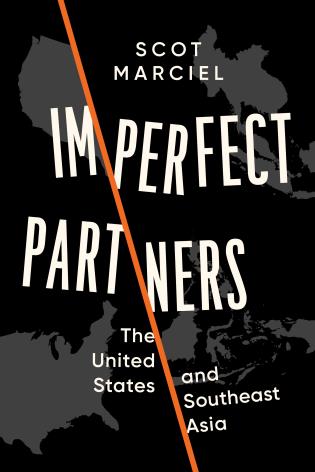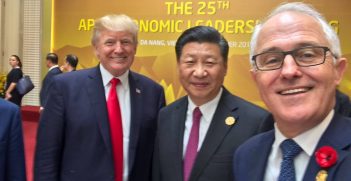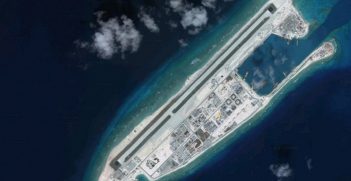Book Review: Imperfect Partners: The United States and Southeast Asia

This book traces US diplomacy, relations, and activity in Southeast Asia through recent history, highlighting both the strengths and flaws in engaging in such American-centred approaches. Such analysis has significance for Australian diplomacy today, particularly regarding implications of responding to China’s rise.
Scot Marciel is a retired US diplomat whose career included postings to a number of strategically important Southeast Asian countries. These included positions of Vice Consul at the US Embassy in the Philippines; the first US diplomat to work in Hanoi after the Vietnam War; Deputy Assistant Secretary of State for East Asia and the Pacific; first American Ambassador to the Association of Southeast Asian Nations (ASEAN); Ambassador to Indonesia; and Ambassador to Myanmar.
Marciel brings to his book, which he describes as “a labor of love,” a depth of experience in Asia Pacific regional diplomacy and expertise in the making of US foreign policy in regard to Southeast Asia. He is clearly sympathetic to what he agrees can only loosely be labelled a “region.” As he notes at the outset: “People who have not spent a lot of time in the area tend to think it represents a community with some kind of shared history, ethos, and outlook. It does not.” The narrative he offers is partly a memoir, partly a policy history, viewing the experiences the author highlights through a mostly benign Washington lens.
The book is divided into four parts. Part I is titled “The Allies,” focusing mainly on US-Philippines relations in the final days of the first Marcos regime. It concludes with an interesting chapter, “Great and Good Friends,” on America’s relations with coup-ridden Thailand. Part II is enticingly titled “The Former Foes,” which traces the post-Vietnam War period of US relations with Hanoi. Part III, “Countries in Transition,” discusses US diplomacy with Indonesia under Sukarno and Suharto and how relations have been evolving since 2010. The concluding chapter in this section surveys US relations with Cambodia and is one of the best chapters in the book. It highlights how relations deteriorated when, “By design or accident, Washington sent mixed signals to Cambodia over the last year of the Trump administration.” Part IV moves to the crux of what is arguably the main theme in the book “ASEAN, China, and the United States.”
Over the years, the US has been criticised by several outspoken Southeast Asian leaders for ignoring its Asia Pacific regional obligations. America’s involvements with NATO and with its European allies as well as its prolonged preoccupation with conflicts in the Middle East was evidence, they claimed, that the US, the sole remaining superpower in the wake of the implosion of the Soviet Union, had little time and even less interest in addressing the security and economic dilemmas they faced.
It was in response to these sorts of accusations that President Barack Obama and Secretary Hillary Clinton announced the “pivot” to Asia, proposing a renewed and more comprehensive commitment by the US to the countries of the Western Pacific. However this turned out to be all sound and fury rather than anything of policy and action substance, and regional leaders began to wonder whether the US was edging towards the end of its leadership of the Pax Americana that had endured for decades. Under the Trump administration the idea of the “pivot” all but disappeared as America appeared to be heading toward an isolationist strategic trajectory.
In the meantime, China began to re-emerge as a major regional player in the Asia Pacific. Ambassador Marciel writes: “China’s rise has injected into regional diplomacy a significant geostrategic element that requires both Washington and the nations of Southeast Asia to think much more strategically and to redouble efforts to work together – not against China, but to protect and advance shared interests.” The qualification “not against China, but to protect and advance shared interests” is interesting, and in fact deeply problematic. At the end of the day, the “shared interests” it refers to are essentially, even uniquely, America’s interests. The assumption is that what is good for America is also good for the region, and indeed for the rest of the world.
Bland statements such as: “Showing up and engaging consistently are essential [for the US], but they only work if Washington attaches substance – a positive, cooperative agenda – to its engagement” are simply not enough. Indeed, the very American view of itself that the statement reflects is nonetheless rejected by Ambassador Marciel’s important reminder that Southeast Asia is a profoundly complex and pluralistic region.
In the context of the Quad alliance between Australia, India, Japan and the US, the ambassador notes that “while some ASEAN members have welcomed this approach, several others see the Quad as too focused on countering China, and thus potentially raising tension and bringing major power competition more directly into Southeast Asia.” China’s re-emergence as a great power in the Asia Pacific is in fact being met with a host of different responses by leaders in the region, many of whose views continue to evolve, right across the region. Not all (or even many) will fulfil Washington’s hope, or more rightly expectation, that what is good for them is agreeing to arrangements like the Quad.
What we have in this very readable book are the reflections of an eminent American diplomat on issues of particular significance for Australia as it continues to ponder how it should be responding to China’s rise, and how those responses are likely to affect its alliance with the US. But like a great deal of contemporary Australian foreign and defence policy thinking, the book appears to be unaware of the recommendations of Hugh White and, of course, Henry Kissinger, that Washington needs to negotiate a quid pro quo settlement with Beijing in which both powers agree to live and let live in the Asia Pacific. Most Southeast Asian states would be far happier with this arrangement than with the prospect of being dragged into yet another war, probably instigated by offensive realists in the Pentagon, America’s academe, and in the US military-industrial complex.
This is a review of Scot Marciel, Imperfect Partners: The United States and Southeast Asia (Rowman & Littlefield, 2023) ISBN 9781538178959.
Dr Allan Patience is a Principal Fellow in the School of Social and Political Sciences in the University of Melbourne. He is the author of “Australian Foreign Policy in Asia: Middle Power or Awkward Partner?”
This review article is published under a Creative Commons License and may be republished with attribution.





